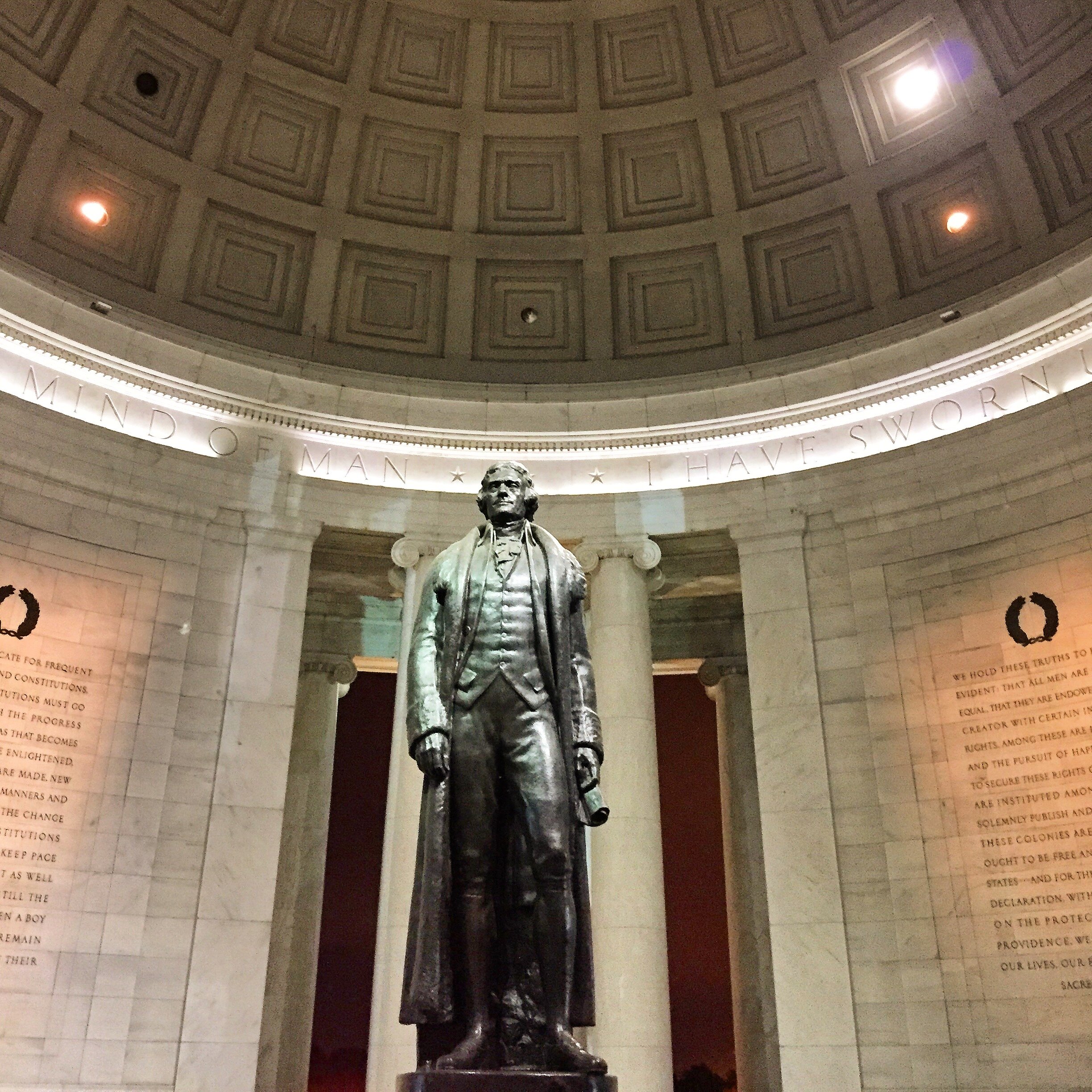Jefferson Memorial
“We hold these truths to be self-evident: that all men are created equal, that they are endowed by their Creator with certain inalienable rights, among these are life, liberty, and the pursuit of happiness, that to secure these rights governments are instituted among men.”
The words of Thomas Jefferson, some written more than 200 years ago, have shaped American ideals. Today, many of these impressive, stirring words adorn the interior walls of his memorial. The Thomas Jefferson Memorial stands as a symbol of liberty and endures as a site for reflection and inspiration for all citizens of the United States and the world.
The Thomas Jefferson Memorial Commission was established on April 13, 1934, his 200th birthday. With the McMillan Commission, they decided to place the memorial due south of the White House, completing the 5-point monument center that Pierre L’Enfant had originally envisioned in 1791. The cornerstone was laid by President Franklin Delano Roosevelt in 1934 and dedicated in 1943.
The memorial’s circular structure, designed by John Russell Pope, was based on the Pantheon and Monticello. It sits on 2.5 acres and weighs a total of 32,000 tons. The statue of Jefferson was placed in the center of the 129-foot dome, exactly like the Pantheon. Sculpted by Rudolph Evans, the statute stands 19 feet tall and weighs 10,000 pounds.
Despite being home to one of America’s most influential founding fathers, the Jefferson Memorial is perhaps most famous for the cherry blossom trees that surround it and the Tidal Basin which the memorial overlooks. The trees were given to the United States by Tokyo in 1912 and have since become one of the Mall’s defining features.
Did you know?
The Thomas Jefferson Memorial was dedicated by Franklin D. Roosevelt who now has his own presidential memorial on the National Mall.
The Pantheon-inspired design of the Jefferson Memorial honors the president’s admiration of classical architecture. The Rotunda at the University of Virginia, founded by Jefferson, and his home at Monticello, feature the same architectural shape.
The designer of the Jefferson Memorial, John Russell Pope, also designed the National Archives and several other buildings in DC.
The Memorial was dedicated on April 13, 1943, Thomas Jefferson’s 200th birthday.
Because of restrictions on metal use during World War II, the original Jefferson statue was made of plaster. In 1947 the original statue was replaced with one of bronze.
In 1939, President Roosevelt laid the cornerstone of the memorial which contained several documents including copies of the Declaration of Independence and the U.S. Constitution.

